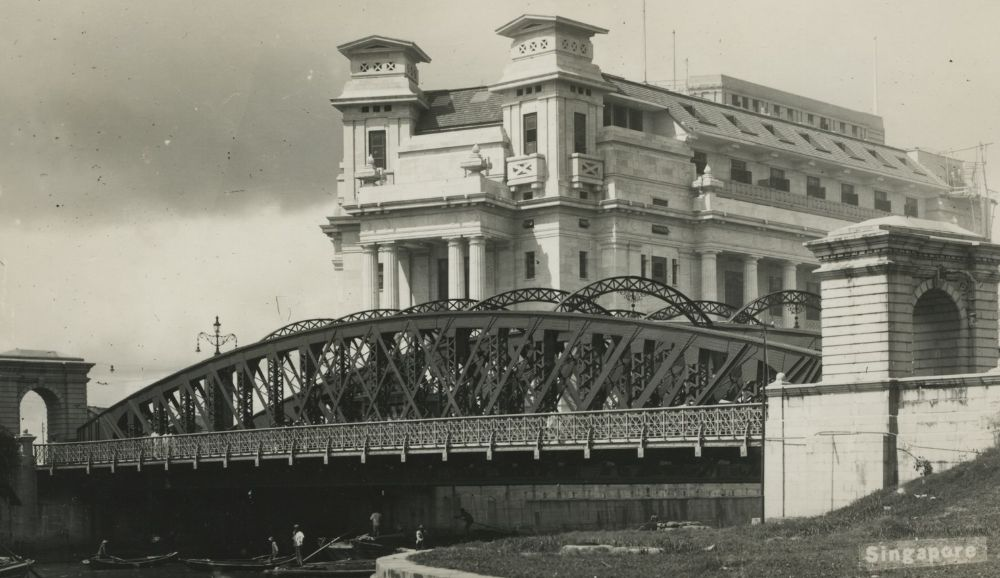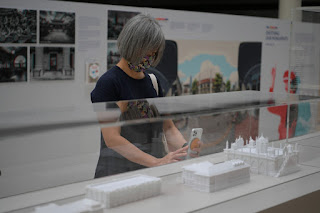The Singapore River Bridges & The Padang are Singapore’s 73rd National Monument
The Singapore River Bridges – Cavenagh, Anderson and Elgin Bridges – were accorded the highest level of protection, as part of the National Heritage Board’s (NHB) ongoing efforts to preserve and safeguard Singapore’s built heritage.
The Cavenagh, Anderson and Elgin Bridges illustrate Singapore’s growth as a trading port and city. The bridges connected Singapore with the world as they facilitated trade and transport links that were necessary for the growth of Singapore in the 19th century. Together, the bridges eliminated the need for boatmen to ferry passengers across the river by linking the south bank of the river with the north – serving the critical function of connecting the mercantile and commercial side with government offices located on the north bank of the river.
The Singapore River Bridges also represent the progressive technological advancements in bridge construction from the mid-19th to the mid-20th centuries. Cavenagh Bridge’s use of cast iron in 1869, Anderson Bridge’s use of steel in 1909, and Elgin Bridge’s use of reinforced concrete in 1929 showcase the rapid development in new materials, industrial technology and shipping trade.
(Clockwise from top left) The Padang, Cavenagh, Anderson and Elgin Bridges will be gazetted as national monuments
The Padang as well as three bridges along the Singapore River will soon be added to the Republic's stable of national monuments.
A national monument gazette is the highest form of recognition for a structure or site's significance. Evaluation factors include its historical, architectural and social importance to Singapore's built heritage.
Singapore currently has 72 national monuments, including the Istana, Esplanade Park Memorials and Raffles Hotel.
read more
Singapore River bridges - Cavenagh Bridge, Anderson Bridge & Elgin Bridge
Anderson Bridge circa 1930.
Elgin Bridge was erected. May 30, 1929
The Singapore River Bridges were collectively gazetted as the 73rd National Monument and are located near other National Monuments such as Yueh Hai Ching Temple, the former Fullerton Building, and the Asian Civilisations Museum. The MRT stations nearest to them are Raffles Place, Clarke Quay, and City Hall.
Significant dates - Dates built:
- 1867-1869: Cavenagh Bridge
- 1908-1910: Anderson Bridge
- 1822-1823: The earliest bridge at the site of the current Elgin Bridge was erected. May 30, 1929: The present Elgin Bridge
Milestones:
- 1987: Cavenagh Bridge and Anderson Bridge underwent refurbishment as part of a master plan to beautify the Singapore River
- 1989: Elgin Bridge was restored as part of a master plan to beautify the Singapore River
- Sept 28, 2008: The Singapore Grand Prix was inaugurated, and Anderson Bridge was part of the race circuit
read more
Historic Bridges over Singapore River
Historic iron and steel bridges over Singapore River had witnessed the ebbs and flows of maritime trading and communal living along the Singapore River banks for almost two centuries. Beyond the living heritage these structures embodied, the stories behind them revealed the intriguing relationships among the Straits Settlement Government, the East India Company and the Colonial Office in United Kingdom.
The construction of the historic bridges occurred between 1869 and 1929 and they are unanimously named after important governors and officials that contributed to the administration of the Straits Settlements.
CAVENAGH BRIDGE:
Cavenagh Bridge built in 1869, is named after Major-General (MG) Sir William Orfeur Cavenagh, the last India-appointed Governor of the Straits Settlement. He served as Governor between 1859 and 1867.
ANDERSON BRIDGE:
Anderson Bridge was completed in 1909 and opened officially in 1910. It is named after Sir John Anderson who served as Governor of the Straits Settlement between 1904 and 1911.
ELGIN BRIDGE:
Elgin Bridge built in 1929, is named after Lord Elgin, Governor-General of India from 1861 to 1863, whom the Straits Settlement government and businessmen appealed to when trade and development works were curtailed after the Straits Settlements, including Singapore, was placed under Bengal rule between 1830 and 1867.
read more
Cavenagh Bridge is the only suspension bridge and one of the oldest bridges in Singapore, spanning the lower reaches of the Singapore River in the Downtown Core. Opened in 1870[1] to commemorate Singapore's new Crown colony of the Straits Settlements status in 1867, it is the oldest bridge in Singapore that exists in its original form
Cavenagh Bridge, P&W Maclellan marker
Anderson Bridge was completed in 1910,[1] and was named after the Governor of the Straits Settlements and High Commissioner for the Federated Malay States (1904–1911), Sir John Anderson, who officially opened the bridge on 12 March 1910
Anderson Bridge, as seen from Queen Elizabeth Walk
Elgin Bridge was named after Lord Elgin, Governor-General of India (21 Mar 1862 - 20 Nov 1863) in 1862 when an iron bridge was built across the river, replacing an older wooden bridge. The current bridge was built in 1929
The crest of the Singapore Municipal Commission at one end of Elgin Bridge
The Padang in front of the Singapore Cricket Club. (File photo: SCC website)
An aerial view of Singapore, showing the Padang on the right, surrounded by Parliament House building, new and old Supreme Court Buildings and Swissôtel The Stamford.
National monuments of Singapore
For historical significance (World War II, self-independence of Singapore, transformation and the oldest memories to the structure), these buildings are not allowed to be demolished. The Preservation of Monuments Act gives the board authority to order preservation of such sites and promote research and public interest in the monuments.
The NHB is a statutory board within the Government of Singapore, under the jurisdiction of the Ministry of Culture, Community and Youth, and it has so far gazetted 74 buildings and structures as national monuments.
73 national monuments 'under one roof' at exhibition to mark S'pore's preservation efforts
Eleven of the monuments at the exhibition were painstakingly recreated using 3D-printed models. ST PHOTO: NG SOR LUAN
Singapore's 73 monuments are located across the island, but from Saturday (Nov 13) to Jan 2, they will all be "under one roof" - at an exhibition featuring renditions of them in various forms, from paper cuttings to 3D-printed models to virtual reality.
The exhibition at the National Museum of Singapore marks 50 years since the Preservation of Monuments Act came into force in 1971, which started the Republic's preservation journey through the formation of the Preservation of Monuments Board.
It is today known as the Preservation of Sites and Monuments division under the National Heritage Board (NHB). Eleven of the monuments at the exhibition were painstakingly recreated using 3D-printed models by Mr Matt Chiu, 29, a graduate from the Singapore University of Technology and Design (SUTD).
related: Definition of national monuments to be expanded, allowing sites like the Padang to be gazetted
related:
















